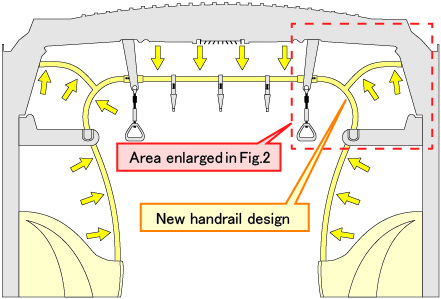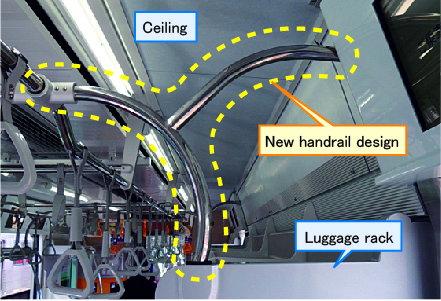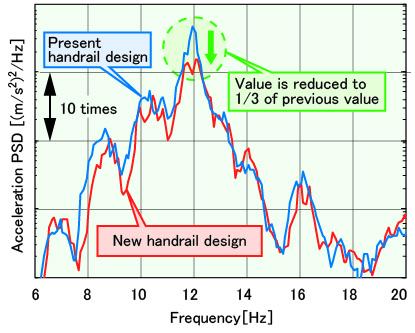2. Handrail contributing to better ride comfort and carbody rigidity
- A method was designed to improve carbody rigidity and ride comfort by virtue of interior handrails.
- With this method handrails are put to practical use with part of "interior roll bars."
- Measurements on a train running on a commercial railway line revealed that this method was effective in reducing vertical vibration.
Flexural vibrations generated during running of the train influences the ride comfort for passengers on board the train, therefore research has been conducted to try to minimise this impact. In association with the Japan Transport Engineering Company (J-TREC), RTRI has been conducting investigations into improving the ride comfort and rigidity of train car bodies by looking at the internal design and structure of a train carriage, which to date is a path that has not been studied. This led to the development of a method to improve ride comfort, by using handrails which are a common feature inside commuter trains (Fig.1, Fig. 2).
This method connects the left and right side frames of the carbody with the roof section. Suppressing cross section deformation of the carbody, increases body rigidity, which should in turn contribute to the aim of improving ride comfort. Based on this principle, the new handrail design actually forms part of the "interior roll bar."
The results from measuring vibrations while running of this car on a commercial railway line showed that along the stretch of track where the effect of the new handrail was most patent, the peak PSD value for vertical above floor carbody vibration was reduced to a third of its previous value clearly demonstrating that introducing this handrail into the carbody structure was effective (Fig.3).

Fig.1 Interior roll bar (in yellow)
Fig.2 Picture of installed handrail
Fig.3 PSD of acceleration above the floor when running